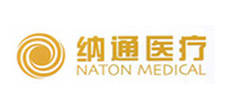
The Overview
Established in 1996, Beijing Naton Medical Group is a medical health-focused leading company within the China biomedical industry. Dedicated in innovative R&D and manufacturing of orthopaedic implants, high-quality surgical tools, and sophisticated biological active implants, Naton Medical is a leader in the industry.
The Challenge
In recent years, Naton Medical has continued to lead and innovate in the implanted devices field. It is constantly perfecting products R&D, devoting itself to material quality control, new material features inspection, and medical products performance.
“Our product material, including titanium alloy, medical polymers, ceramic, and functional material used for orthopedics, dentistry and spine, are required to be validated by testing methods to international ASTM and ISO standards," said Mr. Dong Xiang, Executive Vice President, Beijing Naton Medical Technology Institute. "For example, orthopaedic implants development requires products to pass constant, high frequent and repeated torsion test. However, how do we guarantee test results and reduce loss during tests? These are our concerns."
The Solution
In accordance with ISO 7206, fatigue testing for artificial hip joint prosthesis and thighbone shaft components is strictly specified. Higher stiffness is required; therefore, the thighbone shaft is generally made from titanium. This test standard requires a frequency within 20 Hz. To achieve a better test result, Naton was willing to increase the frequency while controlling the test cycle within an effective range.
Based on their long-term, trusting relationship with Instron, Naton was already familiar with the material testing solutions for relative product research and development.
"One criterion we need to focus on is a system’s ability to perform fatigue tests over a length of time and to confirm high precision and strong, stable results, said Xiang.
Choosing to purchase the ElectroPuls® E10000 all electronic dynamic universal testing machine and WaveMatrix™ software to meet their requirements, Naton focused on the system’s ability to increase frequency to 5-10 Hz, along with its flexible fixtures that are applicable for various specimen sizes, inclination angles, implanted material, and depths of hip joint. This fixture was important to their testing due to its capability to be used in a small environmental test chamber for in vivo simulation.
In addition to testing orthopaedic implants, Naton has also used the ElectroPuls E10000 for testing applications where the instrument is able to offset frequency response limitation caused by traditional servohydraulic fatigue testing systems.
Moreover, to meet more material testing requirements and the growing needs of their customers, Naton purchased two new ElectroPuls™ E3000 Linear-Torsion all-electric testing instruments for dynamic and static testing to conduct their new biomaterial research.
The Results
Compared with others testers, Naton found the prominent advantages of their Instron system to include a user-friendly software interface and easy operation that enable their operators to accomplish testing in more efficient, familiar, and simple methods. In addition, they found time savings & convenience in the power-off data protection function, allowing them to avoid unnecessary trial repeat, as well as increasing test value.